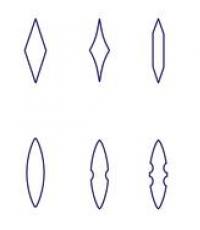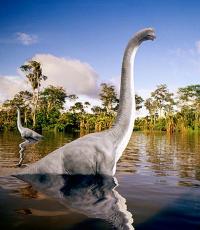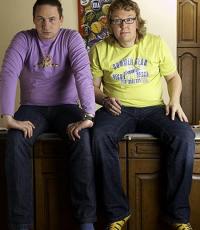Antarctica discovery and exploration lesson presentation. Presentation for the lesson "Discovery of Antarctica". During the trip...
“Antarctica 7th grade” - Antarctica is the highest continent on Earth due to the ice sheet. Iron, copper, lead ores. Coal. Antarctica is the coldest continent on Earth. Minerals containing bromine, tin, manganese, molybdenum. Nature of Antarctica. Deposits of graphite and rock crystal. Norway Russia Japan USA Great Britain etc.
“Nature of Antarctica” - Southern parts of the oceans. Elephant seals. One of the Russian navigators whose expedition first approached the shores of Antarctica. Let's check. In most of the mainland, the January temperature is lower - 45 °C. High pressure. Animals of Antarctica. Antarctica is the coldest continent on Earth. Antarctica recorded the lowest temperature on Earth -89.2 °C.
“Flora and fauna of Antarctica” - Penguins. The seal is a crabeater. Birds of prey Skua Albatross. Blue whale. Fish Ice pike (body temperature -1.7 C). Comply with the 1959 Antarctic Treaty. Chlamydomonas red. Imprints of ancient ferns. Rotifer. Sea stars. Findings of paleontologists. Anemones. Amphipod. Leopard seal.
“The World of Antarctica” - Modern research methods have allowed a clear understanding of the subglacial topography of the continent. UNDER-GLASS RELIEF. In Antarctica, conditions are completely different than on the Southern continents. Modern organisms of Antarctica are represented by mosses, lichens, microscopic fungi and algae, etc. Ice cover Subglacial relief Climate Organic world.
“Lesson Antarctica” - Consolidation. Antarctica has recently been used as one of the sites of world tourism. The area of the continent is 14 million sq. km. The next stage in the discovery of Antarctica is associated with the discovery of the South Pole. The English expedition, at the cost of huge losses, reached the South Pole later. The area of Antarctica is 14 million sq. km. It is washed by 3 oceans.
Slide 1
Russia is proud of them (discovery of Antarctica)
Slide 2

After futile attempts to find the Southern Continent, Cook stated: “... I can safely say that not a single person will ever dare to penetrate further south than I did. The lands that may be in the south will never be explored.” .
Slide 3

Travel map of F. Bellingshausen and M. Lazarev
But the Southern Land still IS, and it was discovered by Russian travelers
Slide 4

January 16 (28), 1820 - the day of the discovery of Antarctica. Russian sailors captain 2nd rank F.F. Bellingshausen and Lieutenant M.P. Lazarev on the sloops “Vostok” and “Mirny”, despite dense ice and fog, sailed around Antarctica at latitudes from 60° to 70° and irrefutably proved the existence of this continent
Slide 5

Modern satellite image of Antarctica
Slide 6

“On the edge of our planet lies, like a sleeping princess, a land clad in blue. Ominous and beautiful, she lies in her frosty slumber, in the folds of the mantle of snow, glowing with amethysts and emeralds of ice. It sleeps in the shimmering icy halos of the Moon and the Sun, and its horizons are painted with pink, blue, gold and green pastel tones... This is Antarctica - a continent almost equal in area to South America, the interior of which is actually known to us less than the illuminated side of the Moon " This is what the American Antarctic explorer Richard Byrd wrote in 1947. At that time, scientists had just begun the systematic study of the sixth continent - the most mysterious and harsh region of the globe.
Slide 7

The sloops “Vostok” and “Mirny” off the coast of Antarctica. From a painting by V. Mironov
Slide 8

Slide 9

Baron Bellingshausen Thaddeus Faddeevich (Fabian) (September 20, 1778 - January 25, 1852) - admiral.
Bellingshausen was born on the island of Saaremaa, located in the Baltic Sea. At the age of 24, he became a participant in the first Russian circumnavigation. And seventeen years later, he and Mikhail Lazarev went in search of the sixth continent.
Slide 10

The commander of the Mirny boat, M.P. Lazarev, was born in 1788. in the Vladimir province. Together with his two brothers, he also entered the Marine Corps. During his training, he visited the sea for the first time and fell in love with it forever. Mikhail Petrovich began his service in the navy in the Baltic Sea. He took part in the war between Russia and Sweden and distinguished himself in a naval battle on August 26, 1808. In 1813, during the war for the liberation of Germany from the Napoleonic yoke, Lazarev took part in the landing operations and bombing of Danzig. And in this company he established himself as a brave, resourceful and diligent officer.
Slide 11

Slide 12

Slide 13

In the temperate zone of the southern Atlantic Ocean, the air began to feel cool, although the southern summer had already begun. The further south you went, the more birds and features of petrels were encountered. Whales swam past in large herds. At the end of December 1819 The sloops approached the island of South Georgia. The sailors began to describe and photograph its southern coast. The northern side of this mountainous island, covered with snow and ice, was mapped by the English navigator Jace Cook. The ships slowly moved forward, very carefully maneuvering among the floating ice.
Slide 14

Bellingshausen showed exceptional tact, preserving for the islands discovered by Russian navigators the names that Cook gave to the capes, and for the entire group - the name of Sandwich; on this occasion he writes: “Captain Cook was the first to see these shores, and therefore the names given to them must remain indelible, so that the memory of such a brave navigator could reach later descendants. For this reason I call these islands the South Sandwich Islands."
Slide 15

Slide 16

Bellingshausen made several attempts to measure the depth of the ocean, but the lot did not reach the bottom. At that time, no scientific expedition attempted to measure the depth of the ocean. Bellingshausen was many decades ahead of other researchers in this; unfortunately, the technical means of the expedition did not allow solving this problem. Then the expedition encountered the first floating "ice island". The further to the south, the more often giant ice mountains - icebergs - began to appear on the way.
Slide 17

The expedition's ships nevertheless crossed the Antarctic Circle and on January 28, 1820. reached 69 degrees 25 minutes S. In the foggy haze of a cloudy day, the travelers saw an ice wall blocking their further path to the south. These were continental ices. The expedition members were sure that the Southern Continent was hidden behind them. This was confirmed by the many birds that appeared above the sloop. And indeed, only a few miles separated the ships from the coast of Antarctica, which the Norwegians called the coast of Princess Martha more than a hundred years later
Slide 18

The island was named after Peter I. Now Bellingshausen was sure that there must still be land somewhere nearby. Finally his expectations were realized. On January 29, 1820, Bellingshausen wrote: “At 11 o’clock in the morning we saw the coast: its cape, stretching to the north, ended in a high mountain, which is separated by an isthmus from other mountains. Bellingshausen called this land the Coast of Alexander I. “I call this discovery a coast because that the remoteness of the other end to the south disappeared beyond our vision. This coast is covered with snow, but the scree on the mountains and steep slopes had no snow. A sudden change in color on the surface of the sea suggests that the shore is extensive, or at least does not consist only of the part that was before our eyes."
Slide 19

Peter I Island
Drawing of the coast of Peter I Island, as well as Alexander I Land in Antarctica. From an album of drawings by artist P.N. Mikhailov, who was part of F.F.’s expedition. Bellingshausen.
Slide 20

They spent 751 days sailing and covered more than 92 thousand km. This distance is two and a quarter times the length of the equator. In addition to Antarctica, the Expedition discovered 29 islands and one coral reef. The scientific materials she collected made it possible to form the first idea of Antarctica.
Slide 21

The discoveries of the expedition turned out to be a major achievement of Russian and world geographical science of that time. The entire subsequent life of Bellingshausen and Lazarev after returning from the Antarctic voyage was spent in continuous voyages and combat naval service. Bellingshausen died in 1852, at the age of 73 years. Mikhail Petrovich Lazarev did a lot for the development of the Russian navy. Mikhail Petrovich Lazarev died in 1851.
Description of the presentation by individual slides:
1 slide
Slide description:
“I call this finding the shore...” (on the anniversary of the discovery of Antarctica by Russian navigators F. Bellingshausen and M. Lazarev) Danilova Natalia Petrovna, geography teacher Daria Bykova, student of grade 6 “B” Municipal government educational institution Novoanninskaya secondary school No. 4, Novoanninsky , Volgograd region
2 slide
Slide description:
“I will not deny that there may be a continent or significant land near the pole... These are lands doomed to eternal cold, deprived of the warmth of the sun's rays; I have no words to describe their terrible and wild appearance. Such are the lands that we have discovered, but what must be the countries located even further to the south! J. Cook
3 slide
Slide description:
So who discovered Antarctica? Satellite photograph of Antarctica Antarctica is a continent located in the very south of the Earth. The center of Antarctica roughly coincides with the geographic south pole. S continent is about 14.1 million km² (of which ice shelves - 930 thousand km², islands - 75.5 thousand km²). Antarctica is also called the part of the world consisting of the mainland of Antarctica and adjacent islands.
4 slide
Slide description:
Their names marked the beginning of the chronicle of the study and development of Antarctica F. F. Bellingshausen M. P. Lazarev
5 slide
Slide description:
Thaddeus Faddeevich Bellingshausen Born on September 9 (20), 1778 on the island of Ezel (now Sarema); Russian navigator, admiral (since 1843); He headed the First Russian round-the-world expedition that discovered Antarctica; Mikhail Petrovich Lazarev Born on November 3 (14), 1788 in the city of Vladimir; Russian naval commander and navigator, admiral (since 1843), commander of the Black Sea Fleet; Discoverer of Antarctica;
6 slide
Slide description:
Goals of the expedition: Discoveries “in the possible vicinity of the Antarctic Pole”; “Continue your research to the most distant latitude that can be reached”; “Every possible effort and the greatest effort to reach as close as possible to the pole, looking for unknown lands;. The first Russian Antarctic expedition of Bellingshausen and Lazarev Country Russian Empire Start date July 4, 1819 End date July 24, 1821 Leader Thaddeus Faddeevich Bellingshausen The composition of the sloop "Vostok" (captain II rank Bellingshausen), the sloop "Mirny" (lieutenant Lazarev) Achievements the existence of the mainland has been proven South Pole (Antarctica) Discovery of the continent of Antarctica, 29 islands, discovery of the South Antilles ridge, survey of the Tuamotu archipelago, discovery of inhabited atolls
7 slide
Slide description:
Differences between “Vostok” and “Mirny” “Mirny” was stronger, more spacious and more manageable; "Vostok" had a hull of low strength (not entirely suitable for ice travel); "Vostok" was faster - 18.5 km/h ("Mirny" had a lower speed - 14.8 km/h)
8 slide
Slide description:
Expedition route Kronstadt, July 16, 1819 Rio de Janeiro, November 1819 Antarctica, January 28, 1820 Sydney, April 1820 Return, July 24, 1821
Slide 9
Slide description:
Geographical results of the expedition A new part of the world was discovered - Antarctica; No one had ever come so close to the shores of Antarctica before - expedition members did it 9 times; Information was collected about the water areas adjacent to the mainland (later some of them were named after Bellingshausen and Lazarev); Antarctic ice was described and classified for the first time; The general climatic characteristics of the Southern Continent are given; 28 new objects were added to the map of Antarctica, which received Russian names; 29 (previously unknown) islands have been discovered in the southern polar latitudes;
Slide 1
Slide description:
Slide 2
Slide description:
The search for ANTARCTICA was carried out unsuccessfully by the Portuguese B. Dias (1487-88), F. Magellan (1520), the Dutchman A. Tasman (1644), and the Englishman D. Cook (1772-75). After futile attempts to find the Southern Continent, Cook stated: “... I can safely say that not a single person will ever dare to penetrate further south than I did. The lands that may be in the south will never be explored.” Russian navigators were able to refute this statement. The Portuguese B. Dias (1487-88), F. Magellan (1520), the Dutchman A. Tasman (1644), and the Englishman D. Cook (1772-75) unsuccessfully searched for ANTARCTICA. After futile attempts to find the Southern Continent, Cook stated: “... I can safely say that not a single person will ever dare to penetrate further south than I did. The lands that may be in the south will never be explored.” Russian navigators had a chance to refute this statement.
Slide 3
Slide description:
Slide 4
Slide description:
An expedition consisting of 2 sloops under the command of Captain 2nd Rank F.F. Bellingshausen left Kronstadt for Rio de Janeiro. The crews were staffed by volunteer military sailors. The sloop "Vostok" was commanded by F.F. Bellingshausen, the sloop "Mirny" was commanded by Lieutenant M.P. Lazarev. The objectives of the expedition were to sail to the Antarctic at the highest possible latitudes in order to find out whether there was land there, and, if possible, to go to pole. The expedition was supposed to answer the question - does a sixth continent exist? An expedition consisting of 2 sloops under the command of Captain 2nd Rank F. F. Bellingshausen left Kronstadt for Rio de Janeiro. The crews were staffed by volunteer military sailors. The sloop "Vostok" was commanded by F.F. Bellingshausen, the sloop "Mirny" was commanded by Lieutenant M.P. Lazarev. The objectives of the expedition were to sail to the Antarctic at the highest possible latitudes in order to find out whether there was land there, and, if possible, to go to pole. The expedition was supposed to answer the question - does a sixth continent exist?
Slide 5
Slide description:
In Antarctic waters, "Vostok" and "Mirny" made a hydrographic inventory of the southwestern shores of the island. South Georgia. Capes, bays and a group of islands were discovered, named after the expedition members. The swim was extremely difficult and dangerous. Small wooden sailing ships were forced to maneuver close to ice and icebergs, often in fog. In Antarctic waters, "Vostok" and "Mirny" made a hydrographic inventory of the southwestern shores of the island. South Georgia. Capes, bays and a group of islands were discovered, named after the expedition members. The swim was extremely difficult and dangerous. Small wooden sailing ships were forced to maneuver close to ice and icebergs, often in fog.
Slide 6
Slide description:
Scientific stations in Antarctica ("Vostok", "Mirny", "Novolazarevskaya"), the Bellingshausen and Lazarev seas were named in honor of the expedition ships' discoverers of Antarctica. The names of F. F. Bellingshausen and M. P. Lazarev are borne by the cruiser, expeditionary, icebreaking, transport and fishing vessels of the USSR. In honor of the discoverers of Antarctica, expedition ships were named scientific stations in Antarctica ("Vostok", "Mirny", "Novolazarevskaya"), Bellingshausen and Lazarev seas. The names of F. F. Bellingshausen and M. P. Lazarev are borne by the cruiser, expeditionary, icebreaking, transport and fishing vessels of the USSR




